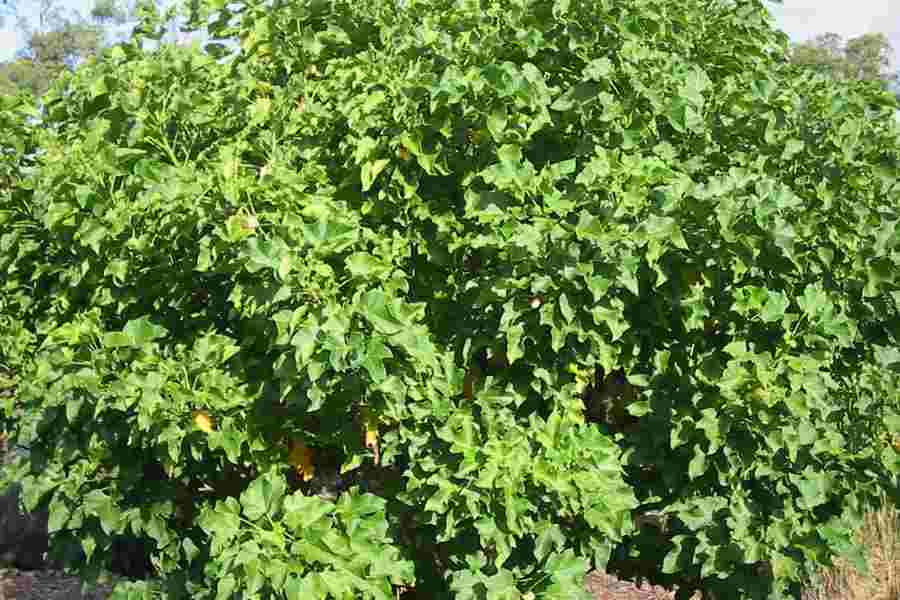This company has no active jobs
About Us
Pests Of Jatropha
Jatropha Curcas is getting importance commercially as the demand of nonrenewable fuel sources increases significantly and also Jatropha is an environmentally friendly energy plantation. Plantation of this plant is thought about to be an outstanding fuel alternative and it is also extremely affordable compared to other fuels. Recently, Jatropha is facing some trouble with insects and diseases. The pests are categorized into two ranges: Pest that affect young plants and Pest that impact grown plants.
Young plant bugs: Cutworm, Scarabeid Beetle, Army worm, Grasshopper.

Agrotis ipsilon: It is typically referred to as Cut worm. This pest impacts the seedlings and young Jatropha plants. If the plant is impacted by the cutworm, the stem gets cut nearer to the soil surface area and this will diminished the plant completely.
Control: This bug can be controlled by selecting the larva found around the plants or by blending the bran, sawdust with insecticides.
Scarabaeid Beetle: This insect ruins the root of the young plant. Initially, the larva takes in the natural matters present in the soil and after that comes to the root. The larva attack may eliminate the whole plant.
Control: The plant with great resistance power can conquer the insect. For heavy attack, insecticides with components carbosulfan and carbofuran can be used to eliminate the bug.
Army worm: Spodoptera litura existence can be recognized by biting in the leaves. The severe infection could completely eliminate the plants.
Control: Insecticides are utilized to control the insects.
Grasshopper: This prevails insect discovered in numerous plants. Valanga nigricornis and Locusta migratoria commonly assaults the plant. The bug frequently assaults the young plant.
Control: The insecticides used betacyfluthrin, cypermethrin, thiodicarb, MIPC, and fipronil.
Pest observed in mature plants:
Pest of Stem: Ostrinia furnacalis, Xyleborus spp.

Ostrinia furnacalis and Xyleborus: This pest damages the Jatropha stem and it is extensively seen in Indonesia. The stem attacked by this insect generally fall down. The existence can be recognized by the larva penetration hole at the stem.
Control: The Insecticide typically utilized to control this pest is carbofuran.

Pest of leaf: The typical bugs observed are leaf caterpillar, Neetle caterpillar, Leaf hopper, Mite, Ear corn caterpillar.
Leaf Caterpillar: This bug can eat all the leaves of the plant in other words duration. The quality and yield of the seeds get decreased due to the heavy attack.
Control: This can be controlled by choosing the old larvae around the surface and discarding the attacked leaves.
Needle Caterpillar: This caterpillar is covered with spines and produces a burning experience when allowed to to skin as it produces specific chemical substance. Initially the bug crowded in the leaf and after that spread all over the plant when it grows older.
Control: Manually, the insect can be killed only by soaking it in water or kerosene. The heavy attack can be controlled by spraying organophosphate insecticides.
Leaf Hopper: This insect is found primarily in tropical and subtropical areas. The insect targets the leaf and sucks all the nutrients of the leaf and gets curls at the pointer. Later, the entire leaf dry and die.
Control: The heavy attack can be managed by utilizing insecticides like imidachloprid, beta cyfluthrin or carbosulfan.
Mite: Mite also attacks the leaf and makes the entire plant weak. The bug presence can be identified when the leaf become yellowish, diminishes, turns red and drop. The pest can also be spread through fallen leaves.
Control: Some preventive steps can be simulated proper sanitation and burning the fallen leaves. Heavy attack can be dealt with by spraying insecticides.
Some awful insect which attacks flower and fruit are, Stink bug (Nezara viridula)
Chrysocoris javanus, Tip borer caterpillar.
Stink Bug: Sting bug is a major insect which attacks the plant throughout bloom duration so the crop yield totally falls down. This insect is seen around the tropical region.
The hazardous enzyme in the plant shrinks the whole plant.
Control: Insecticides suggested for this insect is chlorfluazuron, diflubenzuron, alfamethrin, and lamda cyhalothrin.
Tip borer caterpillar: The bugs frequently takes place attacks the plant in blooming season and this bug is seen widely in tropical areas. The female bug laid the eggs on the tender part of the plant and the young larvae feed the young fruits and plant suggestions.
Control: Manually, the assaulted seeds are recommended to burn. The insecticides like monocrotophos and bensultap are sprayed at the flowering season.

